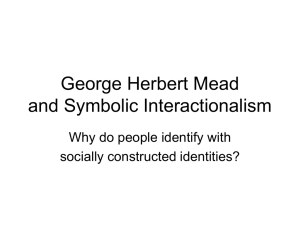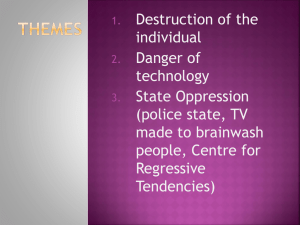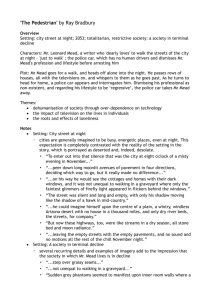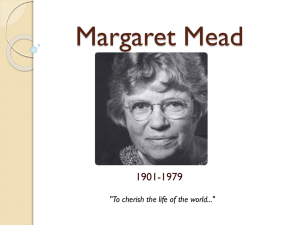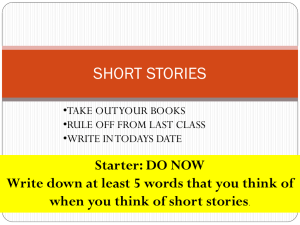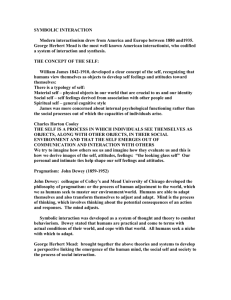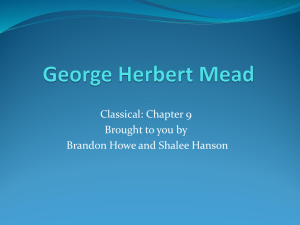Mead - Auburn University
advertisement
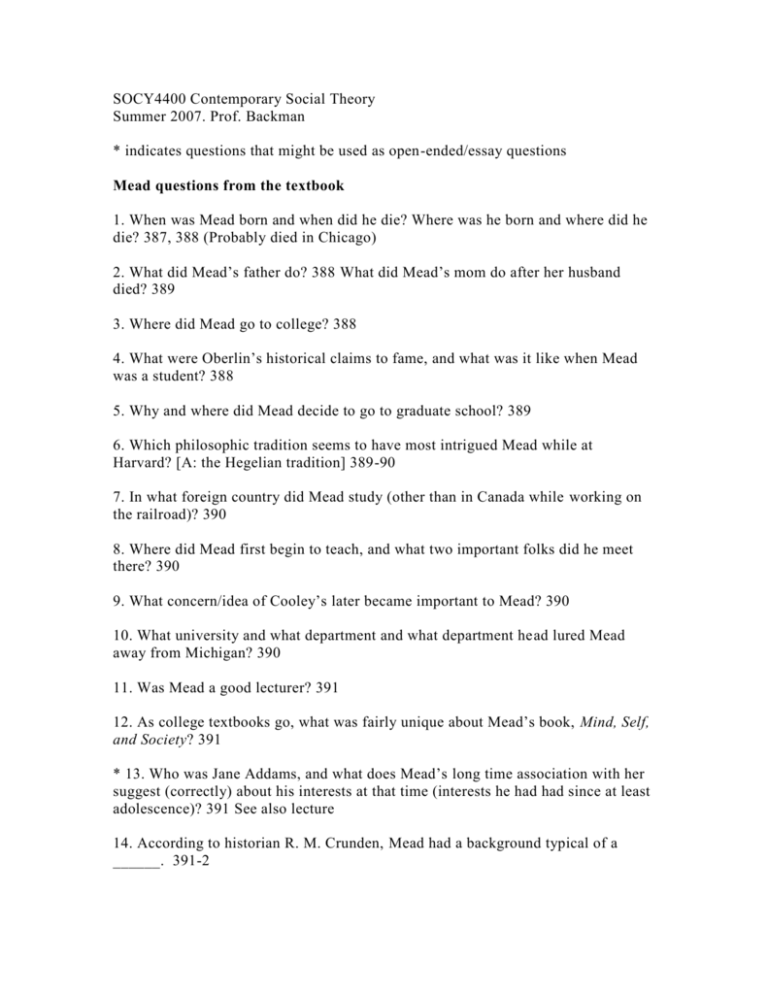
SOCY4400 Contemporary Social Theory Summer 2007. Prof. Backman * indicates questions that might be used as open-ended/essay questions Mead questions from the textbook 1. When was Mead born and when did he die? Where was he born and where did he die? 387, 388 (Probably died in Chicago) 2. What did Mead’s father do? 388 What did Mead’s mom do after her husband died? 389 3. Where did Mead go to college? 388 4. What were Oberlin’s historical claims to fame, and what was it like when Mead was a student? 388 5. Why and where did Mead decide to go to graduate school? 389 6. Which philosophic tradition seems to have most intrigued Mead while at Harvard? [A: the Hegelian tradition] 389-90 7. In what foreign country did Mead study (other than in Canada while working on the railroad)? 390 8. Where did Mead first begin to teach, and what two important folks did he meet there? 390 9. What concern/idea of Cooley’s later became important to Mead? 390 10. What university and what department and what department head lured Mead away from Michigan? 390 11. Was Mead a good lecturer? 391 12. As college textbooks go, what was fairly unique about Mead’s book, Mind, Self, and Society? 391 * 13. Who was Jane Addams, and what does Mead’s long time association with her suggest (correctly) about his interests at that time (interests he had had since at least adolescence)? 391 See also lecture 14. According to historian R. M. Crunden, Mead had a background typical of a ______. 391-2 15. Explain the dialectical tension Mead identified in democracy between increased individualism and enhanced self-discipline. 392-3 16. Did Mead think that positivistic social science had much to offer to social reform? 17. There was a ton of interest in social reform at the University of Chicago when Mead was there. Did he share any of it? 18. In the second half of the twentieth century the status of women and racial minorities in the United States improved substantially. Would Mead have been pleased about either of those advances? Would he have been surprised? 393-4 What echoes of Oberlin College are reflected in those advances? 388 * 19. What was the character of the utopia that Mead described at the end of Mind, Self, and Society? 395-6 How is it more sociological than the utopia of Nietzsche’s overman? [Thought question] * 20. Mead argues that in human adaptation there is no necessary contradiction between causal and teleological thinking. Why not? 397, 412 21. T F For pragmatists like Mead, meaning is not an underlying essence, but an adaptive mechanism that permits manipulation of objects to attain one’s goals. 22. How was it that Charles Horton Cooley apparently inspired Mead to concern himself (in a theoretical way) with children? 399 23. According to Mead, in the social act, individuals adapt ______ to the actions of each other. 401 24. Define taking the role of the other 401 25. T F Mead believed that the larger a society, the more it crushed individuality. 403 *26. Describe the “I” and the “me” (as used by Mead) 404-5 See also lecture 27. T F For Mead, the meaning of an object was its prospective use. 407 *28. Define (like Mead) gesture 408, significant symbol 408 29. What are some of the important things that significant symbols make possible? [Important] 30. Remember: Mead asserted that the self emerged and developed only through social interaction! 413 31. You can review the text’s discussion of the play and game stages on pp. 413 -4. 32. On what grounds did Mead dismiss “Marxian doctrine” as “essentially a religion?” 415 33. Note that methodologically Mead supported hypothesis testing as a central, legitimate approach to science, but that many of his most important followers (starting with Herbert Blumer) do not. 419 34. Remember that “symbolic interactionism” is a term applied to Mead’s ideas after his death by his student Herbert Blumer. 419 35. Define like Mead (except where otherwise specified): game stage, generalized other, general will (as defined by Rousseau), looking-glass self, play stage, significant symbol, taking the role of the other, universal society 421-2 Mead (and Thomas, Chicago, Blumer, and Goffman) lecture 1. Though Mead had interests across the full range of social phenomena and sociological theory, in which area is he most remembered? [A: microsociology] 2. Does Mead prefer to think of the self as unfolding as we go through our childhood or as being created? *3. How does the self develop, according to Mead? [Be sure to discuss the play and game stages, taking the role of the other, the generalized other, reflexivity.] 4. In which foreign country did a number of the Chicago sociologists, including Mead, Thomas, and Park, study? *5. State the Thomas theorem. [IMPORTANT!] 6. What US university had the first department of just sociology? [The University of Kansas had an earlier department of History and Sociology.] 7. What university dominated sociology in the US in the first part of the 20 th century? 8. What famous American family helped bankroll the University of Chicago? 9. What famous African American had Robert Park been closely associated with before joining the Chicago sociology department? Where did this fellow work? 10. Remember Blumer’s three basic premises for understanding human behavior: 1) Humans acto toward things on the basis of the meanings that those things have for them. 2) The meaning of things arises out of the social interaction one has with one’s fellows. 3) The meanings of things are handled in and modified through an interpretive process used by the person in dealing with things he encounters 11. Which former student did Blumer take with him when he moved from Chicago to the University of California at Berkeley (better known simply as Berkeley)? 12. What metaphor for social life is Goffman most famous for using? 13. For Goffman, what is impression management? 14. Remember that impression management may involve trying to enhance the appearance the other person is making as well as trying to enhance the actor’s own. *15. Discuss the difference between front and back regions (also known as frontstage and backstage) in Goffman’s theory.
